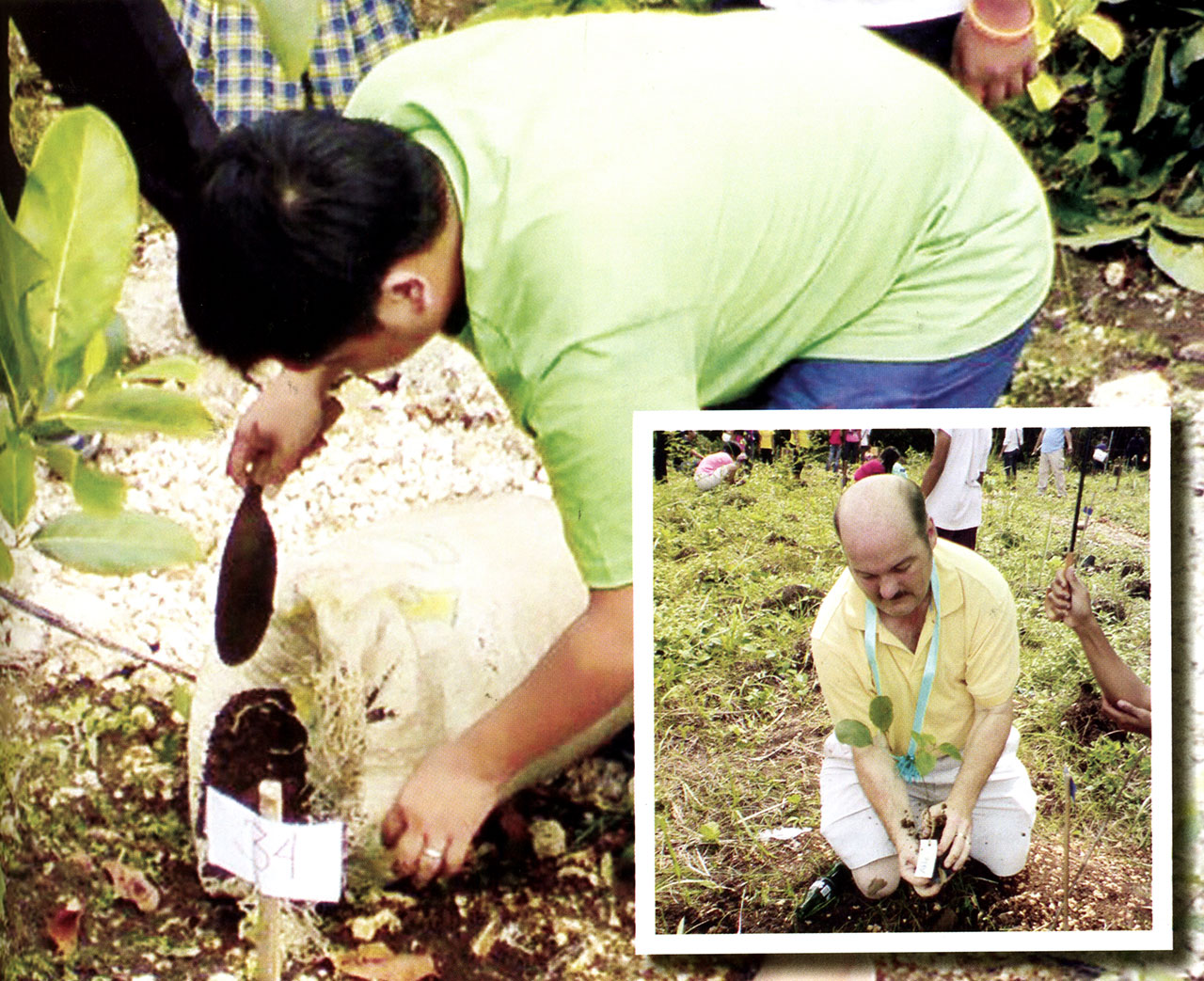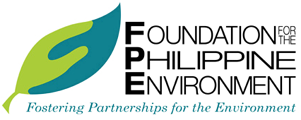Impact Stories
Changing Campus Landscapes
Posted on November 10, 2014|
Project Title: Biodiversity Reserve Development in High Schools
Year: 2011
Site: Cebu and Bohol
Proponent: Soil & Water Conservation Foundation, Inc. (SWCF)
|
The school is many places; it serves many purposes. It is the matrix wherein a child develops physically, intellectually and socially into a more mature and learned young person. It is a second home for students and teachers alike. It can also be a mini-forest reserve, a sanctuary for local flora and fauna, a living biological laboratory.
The Biodiversity Reserve Development in High Schools project proposed by the Soil & Water Conservation Foundation, Inc. (SWCF) entails creating forest reserves within school campuses in the provinces of Cebu and Bohol in Central Visayas. This will create sanctuaries for disappearing native hardwoods and other native tree species which are also home to birds and other wildlife in or near urban areas. The students, teachers, and other stakeholders in the targeted schools serve as custodians of these reserves. Aside from increasing awareness for environmental protection and biodiversity conservation including climate change and its effect on forest ecosystems, the project helps train students and teachers alike in biodiversity monitoring systems.
Degraded biodiversity and species loss plague almost all ecosystems in the islands of Bohol and Cebu where terrestrial lowland forests are nearly gone. Cebu is one of the most denuded islands in the country while Bohol has more tree cover. The Rajah Sikatuna Protected Landscape, the largest contiguous patch of forest in Bohol, is only 5,000 hectares and the remaining forests are found in the Loboc Forest Reserve and other smaller forest fragments.
The degradation of the lowland forests is caused by a combination of deforestation (illegal logging, kaingin for charcoal making, etc), wildfires, conversion of forest land to urban or agricultural use, non-enforcement of environmental laws, and the introduction of exotic and invasive tree species which has reduced the population of native trees species and negatively affected local fauna.
In most cases, local residents are responsible for the abovementioned problems but exacerbating the situation are land speculation and mining — both engaged by big business and wealthy local residents.
With the cooperation and assistance of the Department of Education, particularly the Central Visayas (Region 7) office, schools with sufficient spaces are selected. The planting sites are within school grounds although the local communities have the option to expand outside the school premises. Lowland hardwood tree species are planted, in particular dipterocarps since all dipterocarps in the country are classified from vulnerable to critically endangered by the International Union for the Conservation of Nature (IUCN). Tree species that provide habitat and food for birds, bats and other wildlife are selected for planting.
Aside from planting native tree species, the project entails the removal or thinning of exotic and invasive species such as gmelina, mahogany, and teak which can be utilized for school buildings and furniture. Many campuses have been planted with such species that do not increase native wildlife since they do not propagate native vegetation and their seeds cannot be eaten. Gmelina trees have toxic leaves while the leaves of teak trees do not readily decompose, thus, posing as fire hazards.

The students and teachers themselves will ensure the caring and protection of these forest reserves. With the success of the project, there is concern that livestock invasion and hunting may potentially jeopardize the biodiversity reserves.
The project addresses the need to preserve lowland forest tree species by creating biodiversity reserves in protected locations while providing local students background and hands-on biodiversity conservation activities in and around their schools. These plantings will provide residents, especially those in urbanized areas, the opportunity to observe the trees and wildlife that may no longer be found in nearby natural settings. The trees will later provide seeds for restoration work. The project strengthens the understanding of local biodiversity and the effects of climate change considering the limited awareness levels of the local population, including teachers, students, local government units and the private business sector.
Though only public schools are initially tapped, the program will eventually include private and church-based schools. With the assistance of teachers and the Parents-Teachers Association (PTA) groups, the student themselves manage the project. Monitoring activities include the analysis of bird habitation as a primary biodiversity indicator.
The public school system has an existing tree planting program and mandates the inclusion of biodiversity and climate change in the school curriculum. Schools have the advantage of having built-in sustainability and protection mechanisms. This project is built within the education department’s greening program. Support from the private sector, particularly from the business community, will be tapped.
The project has four components, namely, (1) the establishment and maintenance of school flora and fauna sanctuaries, (2) training and capacity building of students and teachers, (3) information materials production and use, and (4) participatory monitoring, data collection and evaluation.
The first component employs the selection, survey and planning of schools; the preliminary survey and inventory of existing plants and wildlife in the sites (schools and barangays); a self-guiding trail system design that maximizes the educational value of each site; the listing of native tree species and of the number seedlings to be planted; a planting design with emphasis on endangered, vulnerable species and species that can attract wildlife; the harvesting or removal of exotics and their use for school facilities and repair; the physical development of the center and depository; and the maintenance of the facility.
The second component entails annual training workshops on biodiversity depository and biodiversity center care and maintenance; trainings on flora and fauna monitoring in and around school centers; and the installation of a monitoring system at each targeted school with data collected and processed in a common center in Bohol and Cebu.
The third component involves workshops for the preparation and production of information and education materials; the development of portable displays for travelling exhibits; and the production of dipterocarp factsheets and pertinent CD materials.
The fourth component entails quarterly management meetings with students, teachers, and the proponent; monitoring by SWCF done by its staff and by the education department on the district/provincial levels; biodiversity monitoring at schools; and an external evaluation by independent evaluators to be hired by SWCF.
The mission of the Cebu City-based SWCF is the promotion of natural and human resources development through the implementation of activities, projects and programs which are participatory, cooperative, community-building, and sustainable. Its endeavors are designed to be technically appropriate, culturally sensitive, economically viable, and socially acceptable while creating a more ecologically sound and sustainable environment. Its major program thrusts are advocacy and environment education, protected area management, livelihood for rural communities, natural resource management, and karst and cave management.
* * * * *
Originally published in the Foundation for the Philippine Environment Annual Report 2011.

 DISPLAY CALENDAR
DISPLAY CALENDAR
 Read Policy Briefs
Read Policy Briefs
 View Our Partners
View Our Partners
 Access Grants MIS
Access Grants MIS
 Login to Webmail
Login to Webmail